-
Posts
164 -
Joined
-
Days Won
4
Content Type
Profiles
Forums
Resource Library
Events
Gallery
Blogs
Store
Community Map
Posts posted by RichL
-
-
Thanks, that confirms a few details. As an observation, the panelling is probably new but the position of the doors might give a clue about the position of some of the original doors. The ducket end in particular looks like it might be based on the original. The small intermediate windows look too small to be original though, based on the photo in Coakham's book p73 - different to your diagram.
As it's not exactly going to be an action-packed weekend I may play around with LNWR carriage diagrams in Photoshop to see if I can work out what the original may have looked like.
-
 1
1
-
-
It would make sense for the NCC to retain the original body framing as LNWR stock was renowned for being very solidly built.
-
 2
2
-
-
Thanks, that's useful.
There is actually a photo of one in Coakham's Irish Broad Gauge Carriages book that I missed before - page 73 second image from the top. Difficult to imagine what it looked like before!
-
A friend has kindly let me borrow a few books on the LNWR, some of which are informative re the DN&G stock.
Most informative though is HMRS Journal Vol 14 no 7 p215 which gives details of the bogie coaches.
50ft 0in x 8ft 6in Lavatory Brake Composites
Guard/Lavatory/1/2/Lavatory/3/3/Lavatory/3/3
Gas Lighting
B129 a/c Drawing No 4380 Built 1899
Nos 23, 24 and 25.
In 1933 these were sold to the NCC and converted into brake vans. Two were still extant in 1957.
Having compared the number of compartments with various drawings in several publications I struggle to see how you could fit all those compartments and lavatories into a carriage of that length. Also, the number of 3rd class compartments seems large when Barrie states that there were only 24 3rd class seats. A typical 3rd class compartment with lavatory access seems to be 10 seats. Overall, it creates as many puzzles as answers.
The HMRS article gives a full description of all the DN&G stock as well as a few drawings, but not one of the bogie coaches.
In 'The LNWR Recalled' is a short article about Greenore in 1908. GNR loco No 74 Rostrevor was shedded there to operate the Belfast Boat Train,
-
4 hours ago, Galteemore said:
Is this the painting in question? If it is I know that the artist - Raymond Piper - was given strict instructions by the commissioner of the artwork as to the exact composition of the train and toured Ulster in the early 50s sketching the individual vehicles and then composing the painting. I am fortunate enough to have one of the sketches (of the loco, drawn at Newry shed) on my office wall.
The painting was commissioned by Sir John Harcourt, Lord Mayor of Belfast, for presentation to British Railways. Sir John had a soft spot for the old Belfast-London via Greenore route, having used it pre WW1. Sir John died c 1967 but his son is happily still with us, indeed he was the first chairman of the RPSI in 1964! The painting hung at Euston but is now in the NRM collection, York.
My worry is that if the coaches were converted to brake vans as soon as the NCC got them Piper would not have had much to go on.
3 hours ago, airfixfan said:Must dig out my UTA NCC Coach diagram book out tomorrow to check those DNGR coaches
That would be great - we might find out more about them!
-
 1
1
-
-
A late visitor to this topic, but hopefully better late than never. I was curious about the DN&G bogie stock and found this thread.
In the Coakham book, the other reference to the DN&G bogie coaches is on page 70. These coaches went to the NCC in 1933, not the GNR. According to Coakham they were immediately converted to brake vans and numbered 401-403. One was destroyed in WW2. The others survived into UTA service.
The painting of the boat train may be wrong if the carriages depicted are based on ex-LNWR stock in the possession of the GNR.
-
Very reminiscent of this livery, introduced in 1962

Only this is GRAY apparently, not grey

Louisville & Nashville Railroad
-
 1
1
-
-
12 hours ago, DiveController said:
It's official designation is a 0-4-4 BT (back tank, which is very rare, I don't know of any others personally) as they water tank was at the base and rear of the loco cab.
American Forney tanks were amongst, if not the first with that configuration. Very popular for a while on urban lines, including the overhead railways like New York. Also popular for a while on suburban duties in Britain (MIdland, Great Northern, North Eastern etc). This one was Swiss-built for Norway...

(Wikepedia)
-
 1
1
-
-
After lots of dreaming, I am planning a small Irish layout. Originally I was thinking about doing something Dublin & Blessington-style, but the recent flood of Irish RTR diesel locomotives prompted a change of heart. Then there is 3ft gauge, which is also very difficult to resist. Why not throw them all together, I thought. No need for a complex layout, as the variety of stock would steal the show. Here's my idea so far, drawn in Templot, which I have still to master.

The main line (thick blue lines) would continue on the left towards the quay for goods traffic. The tramway track would be in the road outside the station.
The idea is loosely based on Gorey Pier station on Jersey, which was just about as compact as you can get.

Much still to sort out. I possibly ought to have a turntable, for example, and maybe a link between the tramway and the main line. I also need a layout name...........
Any thoughts?
-
 7
7
-
-
I almost forgot that GM/EMD came up with other far-out ideas in the early 1950s, like the Aerotrain - lightweight bus bodies towed by a wingless aeroplane! Even this had 1000hp.

-
 2
2
-
-
24 minutes ago, airfixfan said:
You should try and track down that book on the CBST. Published in 2009 by South Dublin Libraries by Aidan Cruise with many rare photos in its 96 pages.
I got one direct from the Library's own online shop a few years ago.
-
Looking back at this reminds me that in 4mm scale the Airfix 'General' WW1 bus kit is a good starting point for the double deck trailers - you need 2 kits per trailer
-
 2
2
-
-
Can't help thinking that the style of the Type EX and the BL2 hark back to the streamlined tank locos of the 1930s
 South Manchuria Rly
South Manchuria Rly
and Germany..

At 600hp the EX would have been relatively underpowered as a road loco, even for its time. By them EMD had produced the NW3 and NW5 which were similar in concept, if not appearance at 1000hp, never mind the F3 at 1500hp which the BL2 was based upon.
-
Really pleased you are doing a step by step build on here as I was thinking about buying one myself. Your experience will be very helpful. well done so far!
-
 1
1
-
-
1 hour ago, Mayner said:
The F2s were a standard North American domestic model rather than a lightweight export design.
Clyde Engineering adapted the F7 to Australian conditions in 1952 with the 5'3" gauge Victoria Railways A & B Classes
Certainly would have looked impressive on the Cork Mail or the Enterprise
Much heavier and more powerful locos than the lightweights though. An EMD F7 was around twice the power and twice the weight of a Class 121, in very round terms, on the same number of axles.
-
There appear to have been a few GM diesels trickled down to Mexico before 1953 like these F2 examples, but very few
-
Have you tried https://www.alangodfreymaps.co.uk/
They do reduced versions of selected old OS maps, including Ireland.
-
I have no record of where I got stuff from - too laborious at the time to record such apparently unnecessary information! Some took a lot of skill and experience to get around the physical restrictions people put on copying internet images too. I have around 70-80 images altogether including a few maps and duplicates. A CD would be much easier if you PM your address I would happily post one to you.
-
5 minutes ago, Midland Man said:
Great pics.
could you post more please if you do not mind? As for the petrol electric I will may build it if there is a great deal of info/pics.
Ha Ha! If only! The petrol electric was probably from the same stable as the London Brighton & South Coast, Great Central Railway railcars and several others. They at least might give an idea of some of the detail.
My only concern with posting pictures here is the question of copyright. My images are largely copied from the Internet or scanned from books for my own research. I could maybe put the files on a CD or something for you?
-
44 minutes ago, Midland Man said:
Thanks @RichL that was a real help. I have never seen the back of Them. I have got in contact with the IRRS and I am waiting for a reply on whether they have drawing of any of the D&B. I am hoping if they have wagon drawings as they are quite rare in photos.
If you have any success I too would be interested. For such a small line, the variety of locos and stock was amazing. For railcars, don't forget the double-deck petrol electric
-
 2
2
-
-
-
12 hours ago, Angus said:
Thanks RichL, another great photo. A couple of MGWR 6 wheeled coaches can be made including one of the characterful birdcage brake thirds.
Also, is my imagination, or is the station home a dual repeater signal with two arms on the post?
In all Post civil war pictures I've seen this is just a single arm.
Definitely looks like 2 arms, possibly the starter signal for the northern platform rather than a home signal, if the OSI map is any guide. The second arm might be a for movements to the loco shed or a shunting arm for goods trains to reverse onto the up line to gain access to the goods yard, for example. All sorts of unknowns!
Probably lots of subtle changes over the years. The station has been there a long time!
-
 2
2
-
-
There's another photo with the roof on here - good angle to judge what your model will look like (even roofless)

-
 1
1
-
 1
1
-
-
The design has a very Swiss 'feel' in outline - Sulzer influence, maybe?
A bit like these designed for Romania, but with a door in the front, hence 3-window cab instead of 2 windows?

-
 1
1
-
 1
1
-
.png.c363cdf5c3fb7955cd92a55eb6dbbae0.png)

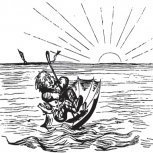
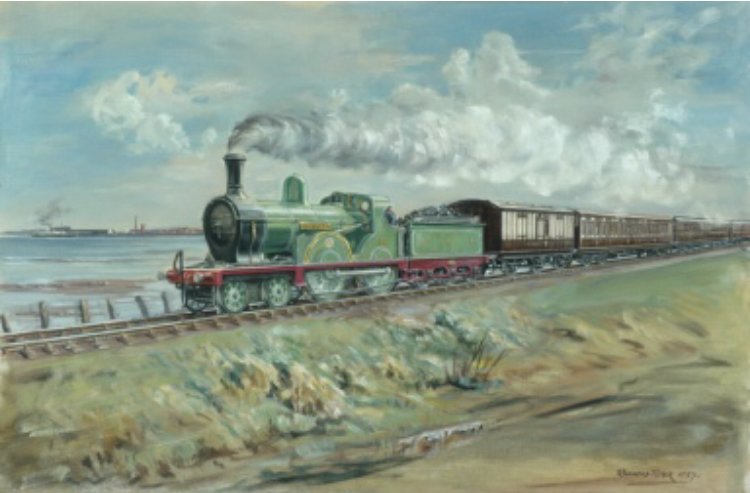
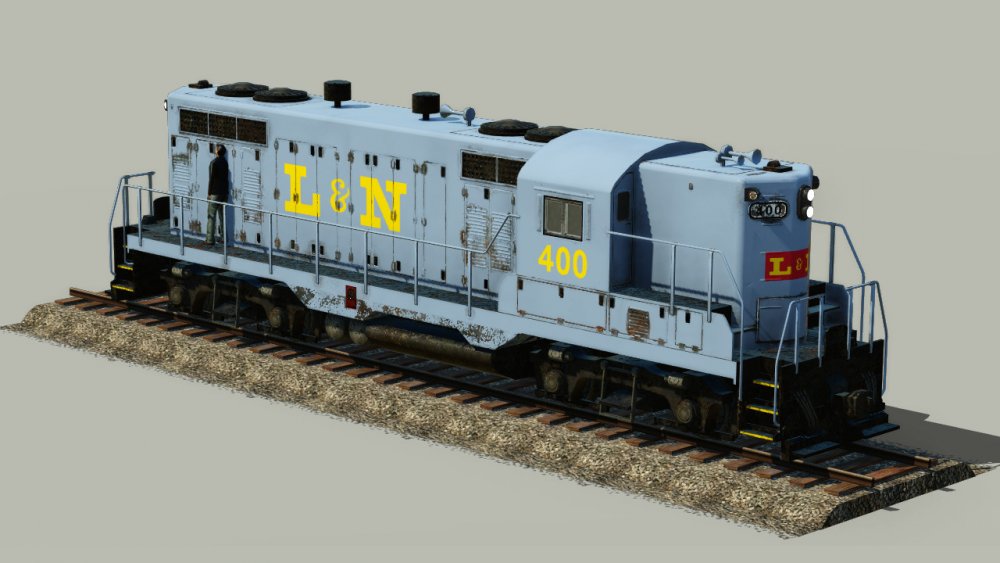
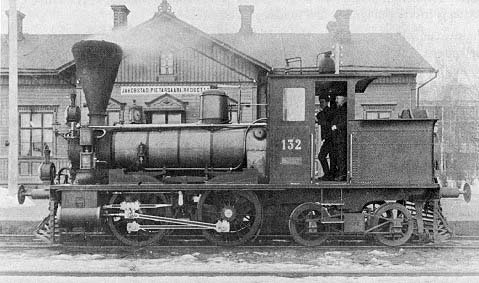


.jpg.48fcc58e9fe5a2ff83c0da7ede5ee77e.jpg)
 South Manchuria Rly
South Manchuria Rly
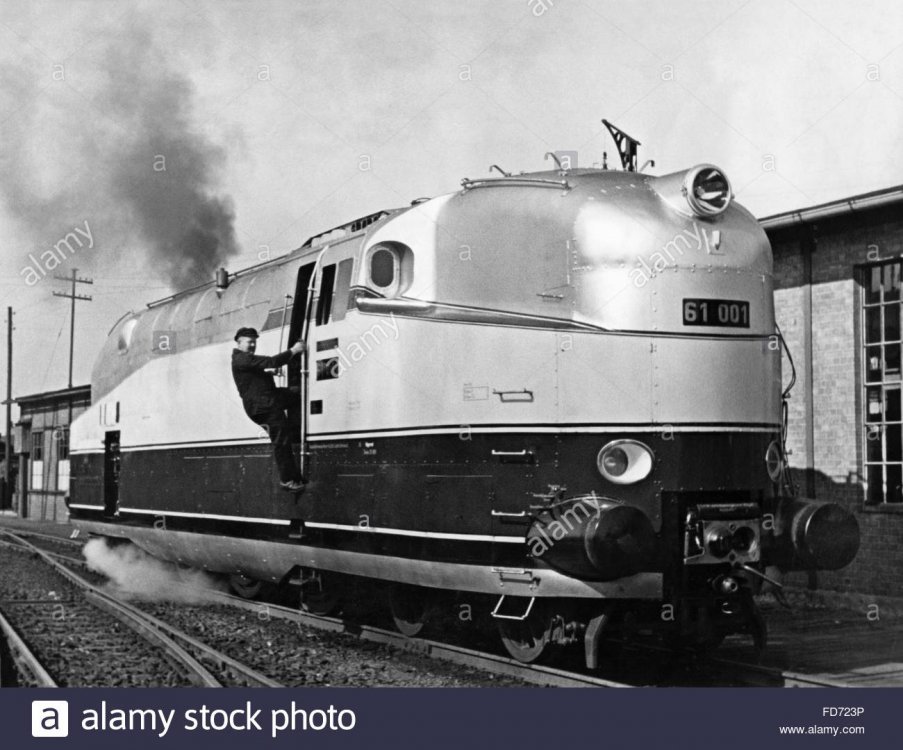
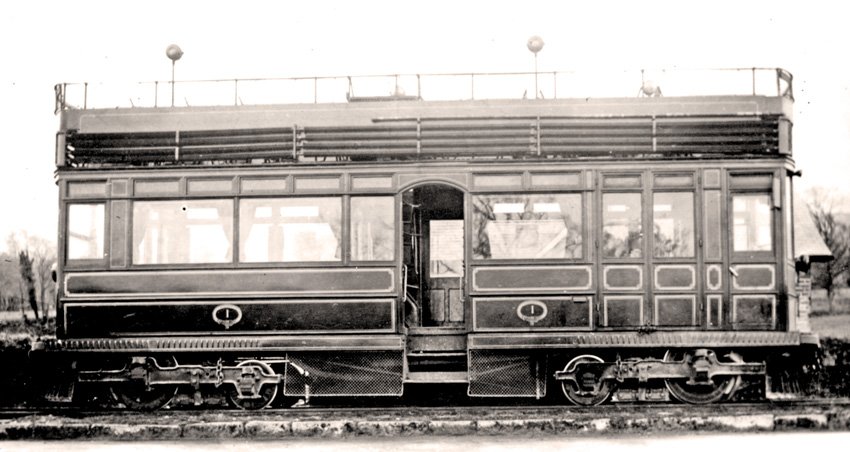
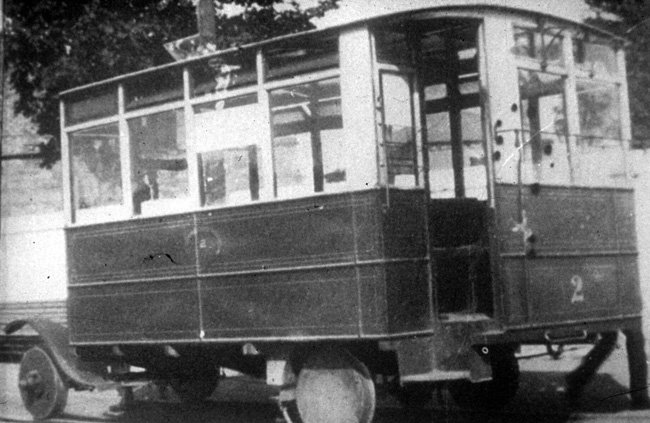
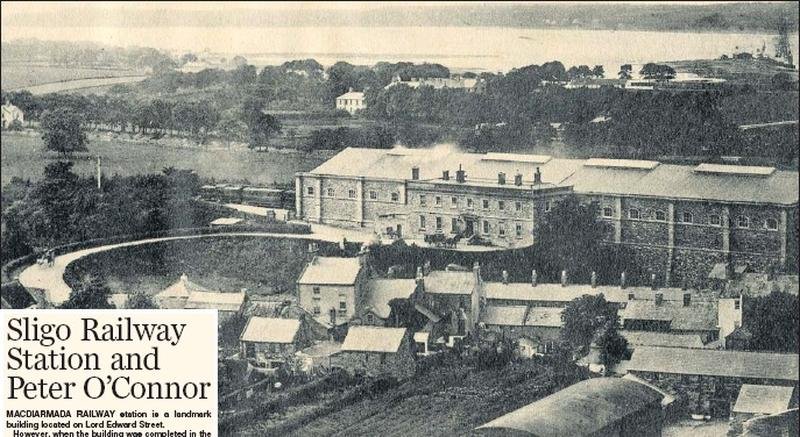
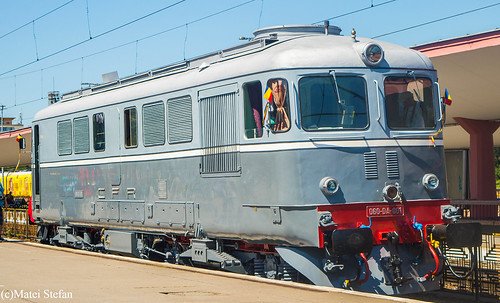
Dundalk, Newry & Greenore Railway
in General Chat
Posted · Edited by RichL
correction
Didn't take long....
Here's the best I can get of the boat train painting by Piper - red spots are doors and white spots lavatories
Here's a quick attempt to do this using David Jenkinson's drawings of 50ft stock as a base, with left to right 3 x 3rds, a 2nd and a 1st, with a guard's compartment on the end. LNWR designs were very standardised, so we can be moderately confident about the overall look of the drawing. This is the only version that fits well with a 50ft body length. You can roughly imagine some doors and windows lining up with the NCC diagram below, assuming the diagram is not exactly to scale.
Only snag is that it doesn't fit the description in the HMRS journal completely. According to that, there should be another 3rd class compartment on the left. There was no way I could fit one in, even with a couple of half-compartments, so I suspect their description is slightly wrong.
Maybe the painting was based on official records, as the general arrangement painted seems to make sense. There is no guard's ducket in the painting though, so not sure if that should be there or not. A minor, but obvious error is that Piper has put brake end windows in the wrong end of the coach in his painting.
Anyway, no guarantees about complete accuracy with any information, or my interpretation. Good news is that the Ratio (now Parkside) LNWR underframe is perfect for the job, including the 8ft bogies.